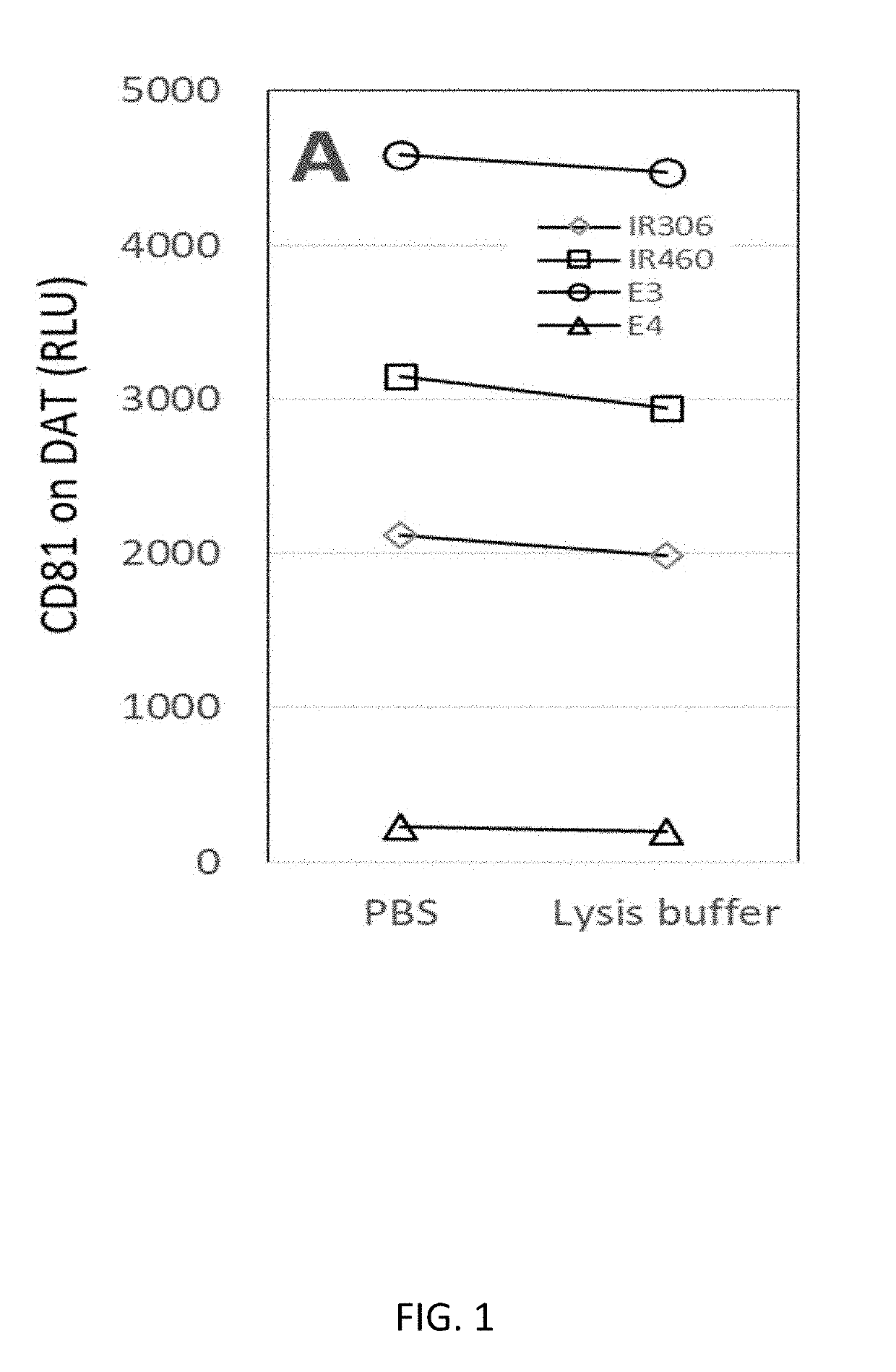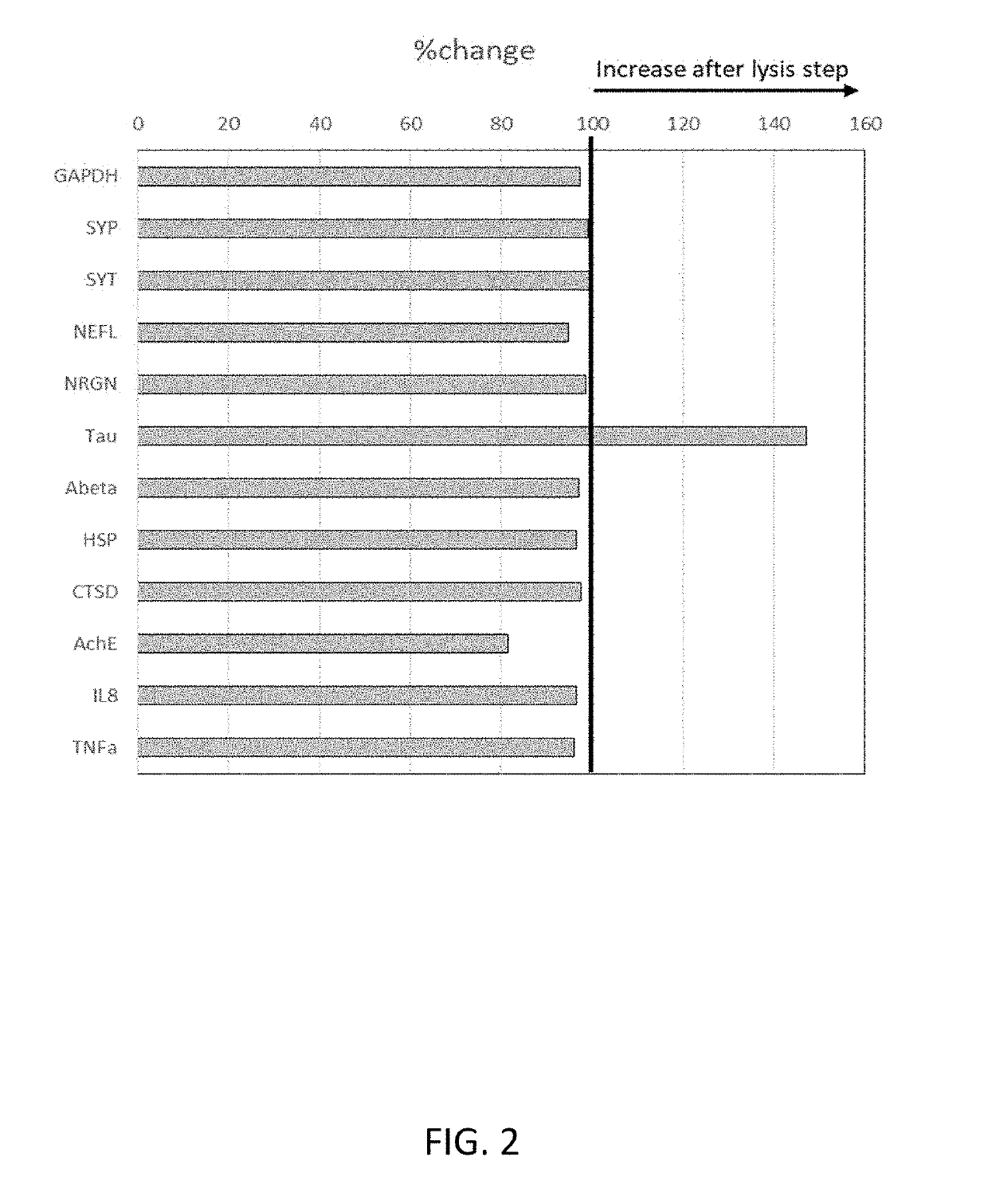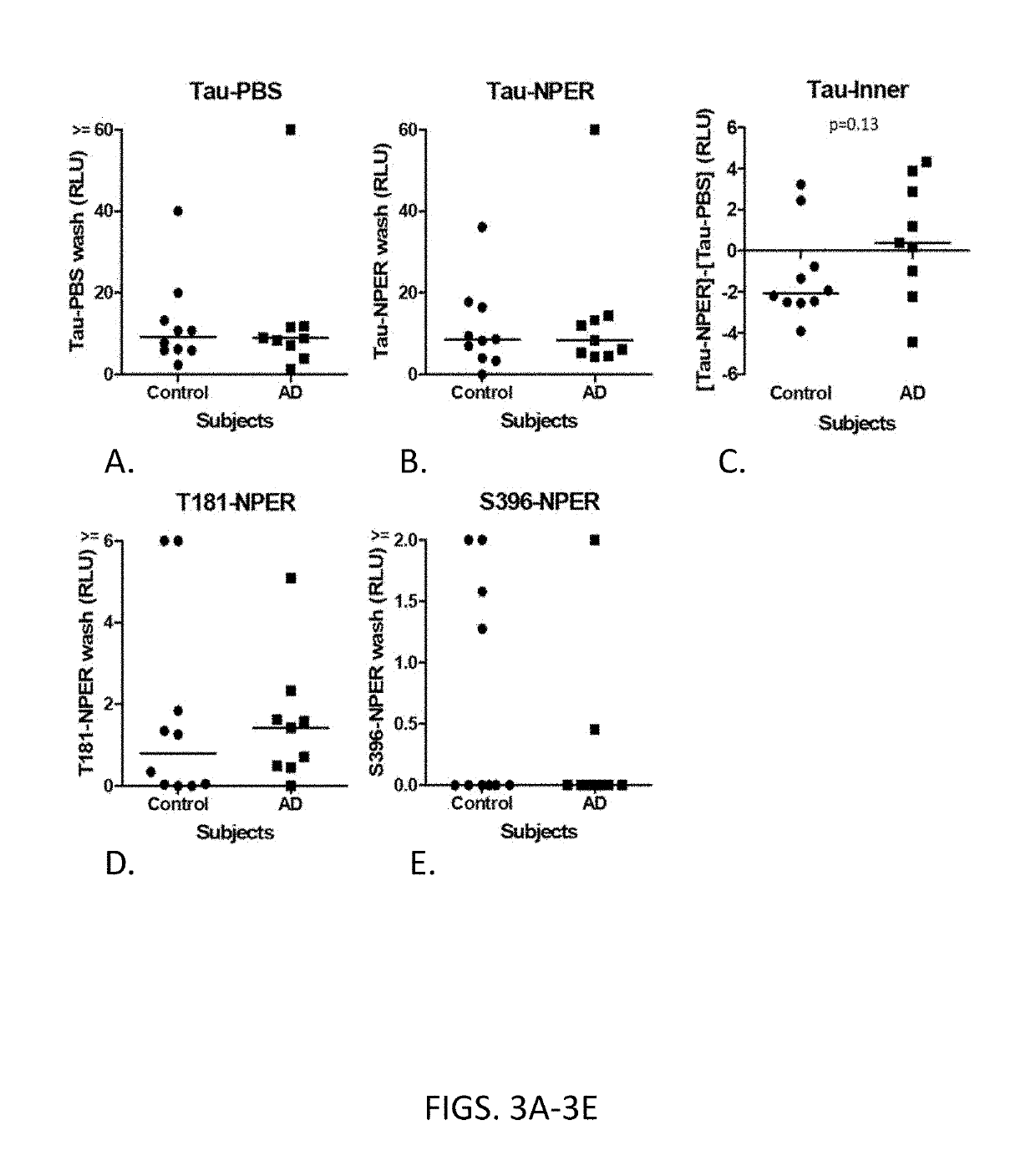Dectection of exosomes and exosomal biomarkers for the diagnosis and prognosis of diseases and disorders
- Summary
- Abstract
- Description
- Claims
- Application Information
AI Technical Summary
Benefits of technology
Problems solved by technology
Method used
Image
Examples
example 1
of Inner Membrane-Bound Biomarkers from Exosomes
[0118]Inner membrane-bound biomarkers from exosomes were detected as follows. To capture exosomes, four plasma samples were added to duplicate wells on an anti-DAT-immobilized (dopamine transporter) ELISA plate. Prior to reacting with biotinylated anti-CD81 probes, one well for each sample was exposed to a lysis buffer and the other well for the sample was suspended in PBS buffer. Incubation of all wells was continued for 1 hour. Next, biotinylated anti-CD81 antibodies was added to all wells to react with exosomes followed by streptavidin-horseradish peroxidase reaction for chemiluminescent ELISA.
[0119]As shown in FIG. 1, CD81 signal was detected in wells treated with lysis buffer, demonstrating that exosomes were maintained on the ELISA plate even lysis buffer was applied.
[0120]In another series of experiments, plasma samples were added to wells on an anti-SNAP25-immobilized ELISA plate to capture exosomes. After exosomes were capture...
example 2
of Cytosolic Biomarkers from Exosomes
[0124]Cytosolic biomarkers were detected from exosomes as follows. Plasma samples were applied to anti-SNAP25-immobilized ELISA plates to capture exosomes. After exosomes were captured on the anti-SNAP25-immobilized ELISA plates, each well was washed with elution solutions with varying pH levels (from pH 7 to pH 1.8), followed by reaction with labeled anti-CD81 antibody. Results were expressed as % Control with the values at pH 7 as 100% and no plasma control as 0%. As shown in FIG. 4, ELISA signals were decreased by lowering pH, but even at pH1.8, approximately 40% of signals remained, suggesting the difficulty of eluting exosomes from the solid support.
[0125]In another series of experiments, plasma samples were incubated with various volumes of magnetic beads with or without anti-SNAP25 antibody immobilization. Next, supernatants were applied to anti-SNAP25-immobilized ELISA plates followed by the reaction with labeled anti-CD81 antibody. As sh...
example 3
of miRNA from Exosomes
[0129]miRNA was detected from exosomes as follows. Plasma samples were incubated with anti-SNAP25-antibody magnetic beads and control antibody-free magnetic beads. After washing extensively to remove any non-specifically bound materials, magnetic beads were exposed to Trizol. The resultant lysates were used for RNA gel electrophoresis. miRNA was detected in plasma samples applied to anti-SNAP25-bound magnetic beads, but not from control antibody-free magnetic beads. These results showed that the methods of the present invention are useful for detecting miRNA from exosomes. These results further showed that methods of the present invention are useful for selectively capturing exosomes on a solid support, lysing or permeabilizing the exosomes while maintaining contact between the exosome membrane and the solid support, and detecting miRNA from the captured exosomes.
PUM
 Login to View More
Login to View More Abstract
Description
Claims
Application Information
 Login to View More
Login to View More - R&D
- Intellectual Property
- Life Sciences
- Materials
- Tech Scout
- Unparalleled Data Quality
- Higher Quality Content
- 60% Fewer Hallucinations
Browse by: Latest US Patents, China's latest patents, Technical Efficacy Thesaurus, Application Domain, Technology Topic, Popular Technical Reports.
© 2025 PatSnap. All rights reserved.Legal|Privacy policy|Modern Slavery Act Transparency Statement|Sitemap|About US| Contact US: help@patsnap.com



